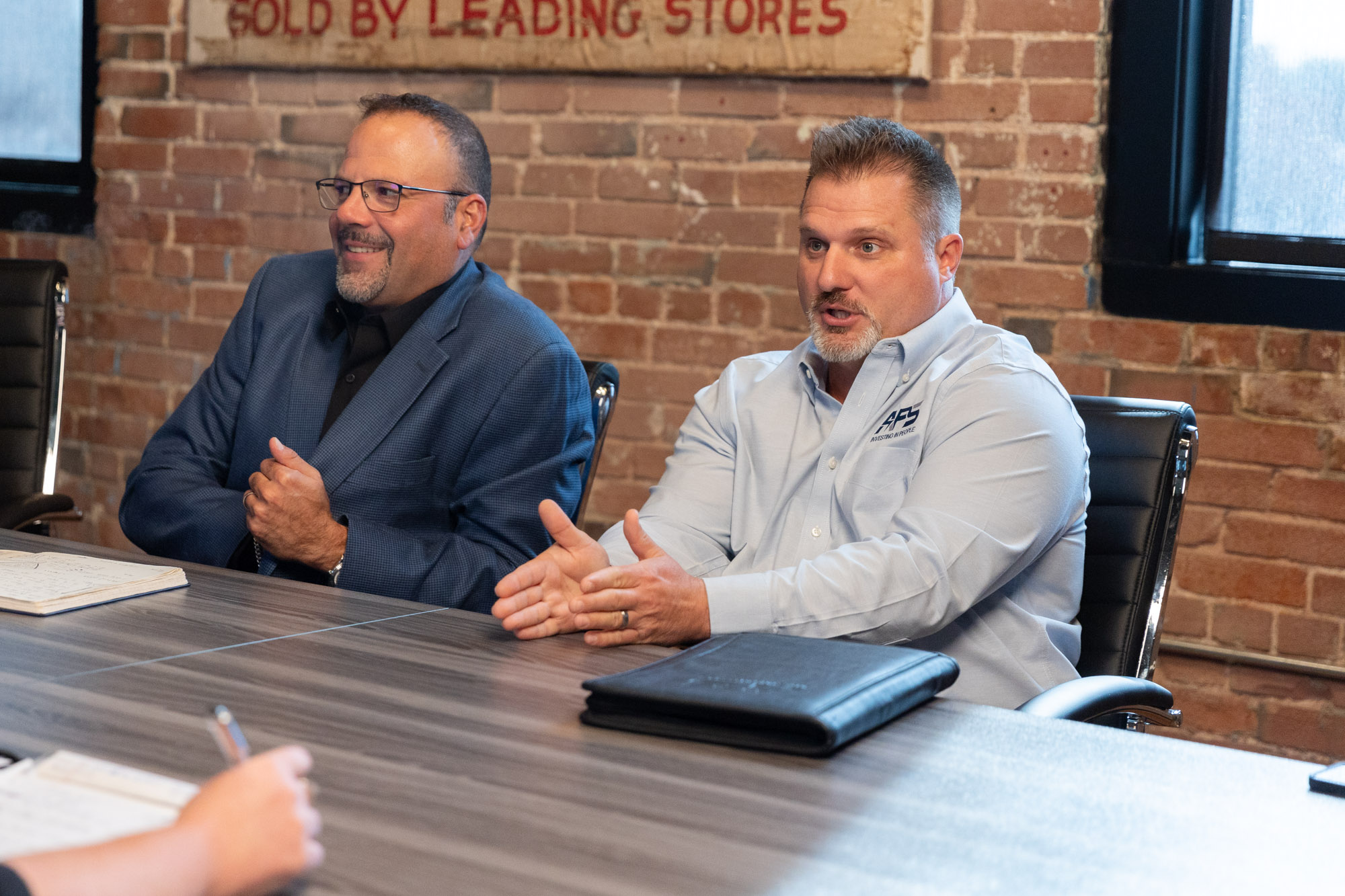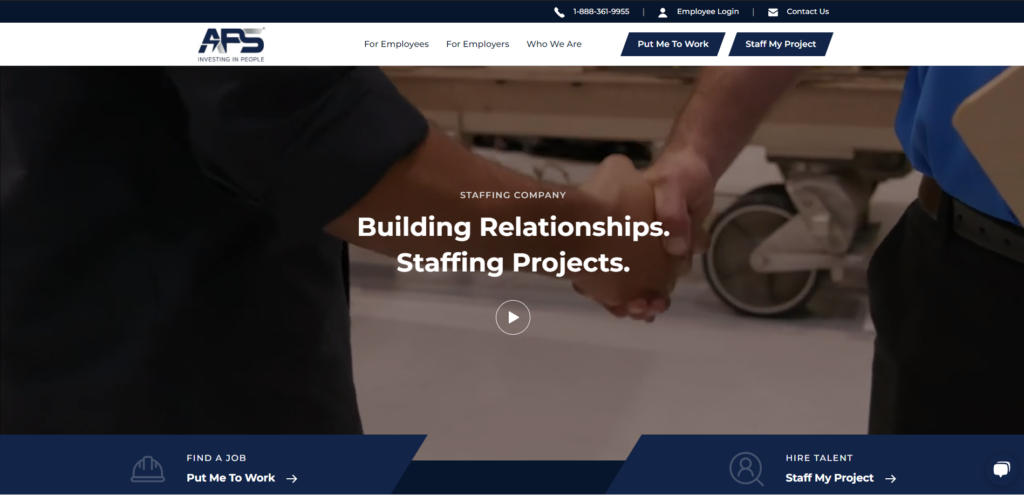
These days, “green” is the color of energy production worldwide. Amid multinational efforts to reduce carbon emissions, reduce our dependence on finite fossil fuel sources, and harness the power of both the sun and our planet’s natural forces, renewable energy has emerged as the leading edge of the power generation industry.
Coupled with ever-increasing electrical demands to power our modern society, the push for clean-sourced, sustainable energy production is at an all-time high. According to the Center for Climate and Energy Solutions, renewable energy is the fastest-growing energy source in the U.S., increasing 42% from 2010 to 2020 increasing 42% from 2010 to 2020. 1
Despite the ongoing debates about renewable energy’s place in the industry, its viability as a baseload source, or its true effectiveness as even a supplemental source of electrical energy, it is now the predominant sector in terms of new construction and commissioning projects. Solar energy, in particular, is the fastest-growing source of electricity in the United States and is gaining similar traction internationally as well.
Rapid Growth of Renewable Energy
In the last 5 to 10 years, a combination of natural gas and other fossil fuel price increases, governmental tax incentives, and a surge in environmental consciousness has driven the power generation market to build and operate renewable energy sites at unprecedented rates. In fact, as of 2022, annual U.S. renewable energy production surpassed coal-fired production for the first time in history. 2
There are downsides, of course—cost vs. ROI, the problem of intermittency, environmental impacts (yes, even for green energy!). And last, but certainly not least, with all this explosive growth comes proportionally increasing demand for renewable staffing solutions and adequate manpower for these types of projects.
The Good, the Bad, and the Ugly of Renewable Energy
The Bad: Initial Capital Costs
A main driver that utilities use to determine viability of adding renewable sources is the minimum rate of return they must earn before a site begins generating true value. In other words, how soon they can expect to recapture their initial investment (i.e., capital cost for building the site) before it begins providing an actual profit margin. This is often defined as Cost of Capital, or CoC.
In terms of strict capital costs, renewable energy projects do not differ much from their fossil fuel counterparts; both must factor in materials, equipment, supplies, environmental surveys, land-use rights or purchases, permitting, manpower costs, etc. But when we look at the rate of return, this is where things begin to differ dramatically.
Rate of Return: Renewable Energy vs. Fossil Fuel
A typical fossil fuel power plant may have higher initial capital costs, but these are sites that can produce up to 5 to 6 times the output of a typical solar PV site. That output capacity directly correlates to revenue. The higher the output (measured in kw/hour), the higher the rate of return. Put simply, a fossil fuel power plant will pay for itself in a much shorter period of time than most renewable energy sites.
Although the strict capital costs for renewable energy projects have indeed decreased in recent years, they still remain relatively high. The COVID pandemic also had a significant impact on this market by large-scale supply chain interruptions, leading to a shortage of base components such as polysilicon, derived from quartzite ores, much of which comes from China. Polysilicon is a key material used in solar panels themselves. Since the pandemic, supply chains have largely been restored, leading to a “rebound effect” in solar PV construction in just the last two years.
Nevertheless, the CoC remains quite low in comparison for renewable energy as a whole, although it is improving slowly. And with a slower rate of return on this investment, it may still deter utility owners from pursuing these options. Or, in some cases, they may seek to reduce these initial capital costs by implementing aggressive cost-savings measures. This approach may better satisfy their budgets and shareholders, but oftentimes has a negative impact on site quality, materials, labor wages, and so on.
The Good: Price Stability for Long-Term Operations
Despite the initial upfront cost of building utility-scale renewable energy, once these sites are fully functional and operating as intended, they are not subject to the same fuel price fluctuations that often plague the fossil market.
By 2015, natural gas prices had hit a near-record low, beat only by prices that hadn’t been seen since the 1990s. Utilities sought to capture this opportunity, moving away from renewable energy, and thus creating the last great construction boom for natural gas-fired power plants. However, since then, the price of natural gas has increased over 255% as of 2022 data. 3
This, combined with renewed tax incentives and subsidiaries for renewable energy efforts, has forced utilities to vigorously pursue renewable energy projects once again, eager to not only break free of the volatility of the fossil fuel market, but to push their efforts into creating and fostering more sustainable and clean means of energy production. Solar PV farms have been the most preferred type by a considerable margin, leading to further developments in renewable staffing solutions and technologies.
The Bad: Intermittency
Without a doubt, one of the biggest points of debate amongst politicians, energy industry insiders, fossil power advocates, and even average Joes and Janes alike… As Maya Angelou once said, “No sun outlasts its sunset, but it will rise again and bring the dawn.”
This is a fair point to be made. That solar power plant isn’t generating electricity after the sun goes down. It is not paying for itself during overnight hours. That CoC will have to wait. The electric grid will have to make do until the sun rises again—and hopefully it’s not a cloudy day tomorrow.
Adding this much intermittent energy production to our grid results in some very unique challenges in terms of supporting grid reliability and meeting that growing electrical demand. The electric grid has very limited storage capacity in and of itself. It is essentially a “produce and consume all” cycle that must be carefully and constantly balanced to avoid large-scale disruptions and other reliability issues that could adversely affect utility customers and even the power plants and the grid components themselves.
This intermittency forces renewable energy production to be classified as “non-dispatchable,” meaning they are not suitable as baseload sources and are thus unable to satisfy fluctuating electrical needs nearly as well as other baseload sources, such as fossil and nuclear power.
The Good: Battery Storage and Smart –Grid Technologies
Robust battery solutions are the key to implementing grid-scale storage capacity, which can greatly mitigate the intermittency problem associated with renewable energy. Battery energy storage systems (BESS) are employed to help balance load vs. demand around the clock, even in periods where solar PV or wind turbines are not generating power themselves.
Battery Energy Storage Systems
Utilities are racing to add battery energy storage systems to their renewable sites (again, mostly in conjunction with solar) to the extent that BESS manufacturing and site deployment has almost become an “industry within an industry” itself. In just one year, from 2021 to 2022, BESS installations rose by more than 75%, comprising approximately 11GW of storage capacity. 4
This trend is expected to continue to increase rapidly in coming years as utilities move towards aggressive carbon-reduction goals set forth by the Net Zero 2050 initiative. In turn, renewable staffing solutions will likely become even more important year over year, and more professionals can begin exploring further opportunities for their careers.
Smart Grid Technologies
Smart Grid technologies have also begun to play a key role in helping solve the intermittency issue. Smart grid technologies are able to utilize precise sensing and instrumentation data at the site level for a variety of things, such as weather conditions, site output, and potential issues, and can greatly help better match load and supply from a variety of sources in real-time. Grid operators are able to respond much more quickly to changes in variable sources, such as wind and solar, and make balancing adjustments in order to preserve grid stability and reliability.
The Bad: How “Green” Really Isn’t So Green
In an absolutely ideal world, renewable energy (including solar, wind, hydro, etc.) would be able to generate their power with little to no environmental impact. That’s the whole point, right? Well, as it turns out, “green” energy does have a darker side, aside from requiring a much larger geographic footprint.
Land
Solar farms, on average, take up to 10 acres to produce one megawatt of electricity. 5 Some wind farms take up as much as 2 to 40 acres per megawatt of capacity 40 acres per megawatt of capacity 6). Let’s do the math: A typical fossil fuel power plant has anywhere from 750MW to 1200MW of nameplate capacity. In order to match that kind of output, a solar farm would require up to 7,500 to 12,000 acres (11.2 to nearly 18.75 square miles), and a wind farm would require up to 1,500 to 30,000 acres (2.3 to 46.9 square miles!) for even the smaller fossil plant.
All of this requires displacement of natural resources, plants, and wildlife, and it has an obvious impact on the land itself by virtue of constructing and developing these lands—and for an intermittent source, at that. To put this in perspective, a 1200MW fossil or nuclear plant requires only about ½ to 1 square mile of land use. To be fair, there are also more concentrated and continuous sources of pollution and environmental contaminants built into the design of fossil plants.
Ultimately, that’s the trade-off. In order to produce carbon-free electricity, these sites can require anywhere from 12 to 40 times as much land, which is an enormous environmental impact in and of itself.
Toxicity
The process for manufacturing solar panels is also problematic. Mining the quartzite puts mine workers at risk for occupational hazards such as silicosis. Refining the quartz into silicon requires tremendous amounts of energy (often from non-green sources that produce CO2 and SO2 emissions themselves). And, finally, purifying this down to the high-grade polysilicon needed for solar PV panels creates the substance silicon tetrachloride. 7
This is a very toxic substance that, when disposed of without adequate environmental precautions, interacts with water to release hydrochloric acid, which can obviously have a devastating effect on soils, flora, fauna, waterways, and groundwater reserves.
Waste
One of the biggest problems facing the wind power industry currently is excess waste in the form of fiberglass wind turbine blades. These blades, bound together with a very tough epoxy resin, are extremely difficult to break down; therefore, most used blades end up in landfills, where they are accumulating by the thousands of tons.
Flooding
The dams used for hydroelectric power plants flood lands that were otherwise useful for agriculture and habitation and can block migratory fishes and other species, thereby potentially disrupting ecosystems far beyond their actual locations.
Dam building and subsequent flooding have forced the relocation of tens of thousands of people over the last 100 years, and some of the more severe dam failures in history have resulted in the destruction of property, losses into the billions of dollars, and has caused the deaths of thousands downstream of these failures.
The National Performance of Dams Program (a joint effort between the Department of Civil & Environmental Engineering and Stanford University) estimates there at, on average, about 10 dam failures per year in the U.S. as of 2018. 8 Many of these are minor failures, fortunately.
The Good: Increased Conservation Efforts and Recycling Process Improvements
Improvements
Thoughtful planning and more robust development strategies are beginning to emerge as a predominant effort during the initial stages of renewable energy site construction projects.
Conservation
One conservation effort may be to build sites on lands that already have little wildlife habitat, will cause minimal disruption to natural processes, and are of little value to the agricultural industry. Restocking and replanting native flora on solar PV sites can minimize the impact on bee populations and other insects that are a vital part of those ecosystems.
Modern methods of assessing a land area’s potential energy value versus a site’s impact can be modeled through computer simulations and complex calculations; this can help greatly minimize geographic impacts for areas not as ideal for solar or wind farms.
Recycling
In recent times, there have been significant advancements in new processes that could potentially be used to salvage and/or recycle wind turbine blades and solar panels, with the hopes of utilizing this recycled material to fabricate additional blades, panels, and other equipment for use in future projects.
The Bad: Lack of Qualified Personnel to Provide Renewable Staffing Solutions
The renewable energy industry is not even yet a teenager in terms of relative age when compared to other sectors of the power generation sector. Although solar power and the use of wind as an energy source have technically been around for many decades, their emergence as a principal utility source of power generation is a movement that has only really taken hold in the last 10 to 15 years.
What this translates to is simple: qualified and experienced personnel are needed to fulfill the demands for renewable staffing solutions, but finding them is proving to be a challenge. Other longer-lived sectors of the power industry have long had the luxury of decades of collective experience that is often handed down from one generation to the next—a continuous stream of tacit knowledge that keeps delivering fresh, qualified personnel to satisfy manpower loading requirements for new capital projects, outages, O&M, etc.
The Need for Industry Experts
In particular, the solar PV industry has only seen about 10 years of true growth, with much of that growth having to pull talent from other areas of industry not accustomed to Solar’s unique site needs.
Those tasked with leading commissioning efforts and quality control on things such as inverters, SCADA, battery storage systems (BESS), automated solar array tracking systems, civil engineering oversight specific to solar sites, etc., have been extremely hard to come by, and a lack of personnel uniquely experienced with these systems and equipment can be highly detrimental to a project’s success.
It’s a problem of supply and demand. With so many utilities opting for cleaner, more sustainable means of electricity production, demand for renewable staffing solutions has skyrocketed, while the supply of personnel able to complete these projects remains quite low.
The Good: Strategic Renewable Staffing Solutions and Precise Networking
EPCs, utility owners, and construction firms can all benefit from a dedicated staffing partner specifically focused on their renewable energy manpower needs. A good staffing partner will not only be highly attuned to the renewable energy market itself, but will also have the years of industry experience needed to properly leverage the right talent for the right job.
They will come with a network of highly skilled, experienced renewable energy candidates who are ready, willing, and able to get their project completed on time, within budget, and safely. This is a staffing firm that understands the unique challenges they face and has manpower solutions ready to solve those challenges.
APS Solutions: Providing Renewable Staffing Solutions
APS Solutions has a team of industry experts on standby with over 15 years of experience in staffing renewable energy projects, and a vast network of site personnel to back it up. They understand your needs fully and are able to match those needs with qualified candidates with pinpoint accuracy.
APS also aligns its industry experience and personnel networks with cutting-edge staffing strategies focused on proactively managing available talent pools, internal quality control measures, and an intense, thorough vetting process for new candidates before submission to their clients for review. What this means is that site project managers and those requesting renewable staffing solutions for their projects can expect not only a fast response to their needs, but the reassurance of top-quality support from both their field personnel and their offices, situated throughout the U.S.
Find Your Renewable Staffing Solutions Today
Ready to put our experience, expertise, and networks to work for you? Contact APS Solutions today to learn more about our proven processes and how they can help you conquer the renewable energy staffing shortage problem—and get your project done the right way the first time.
Renewable Energy Positions APS Staffs
- Site Construction Managers
- Owner’s Representatives
- Site Superintendents (Electrical, Mechanical, Civil, etc.)
- Commissioning Managers
- Commissioning Field Engineers and Technicians
- Site QAQC personnel
- Site Construction personnel
- BESS experienced personnel
- SCADA experts
- Long-term O&M support
Sources
- Center for Climate and Energy Solutions
- U.S. Department of Energy
- Macrotrends.net (Natural Gas Prices Historical Chart)
- International Energy Agency
- Great Plains Institute
- Our World of Energy (www.ourworldofenergy.com)
- IEEE Spectrum
- NPDP: Dam Failures in the U.S.






